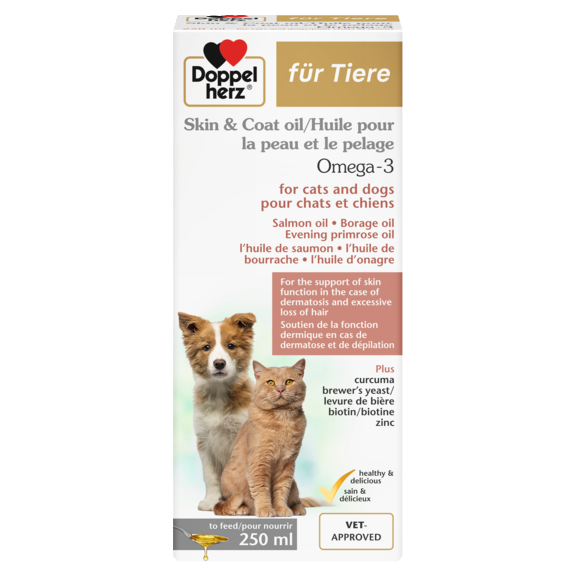If your cat's coat appears dull and shaggy or feels greasy when stroked, these may be signs that your cat has a health problem. A visit to the vet is also recommended for dandruff and bald patches. Dull, matt, shaggy or greasy fur can have several causes. Older or overweight cats reduce their grooming routine with increasing age or weight. The sometimes acrobatic poses that a healthy, agile cat
assumes for grooming then naturally become more difficult and grooming is neglected. This also applies to cats that are physically impaired due to already known chronic diseases.
So it helps if you observe your cat's cleaning behaviour and look a little closer if you notice any unusual behaviour.
However, not only good hygiene is of central importance for your cat's health. Nutrition plays an equally important role: the supply of the right nutrients is essential for healthy skin and a thick, shiny coat. If your cat's diet lacks essential fatty and amino acids, minerals or trace elements, for example, such nutrient deficiencies can also be the cause of a dull coat and dry skin. In addition, the
composition of the food should be chosen in such a way that it supports the intestinal flora, as this can react extremely sensitively to incorrect nutrition - among other things with symptoms that become noticeable in the skin and coat.
Parasites
External parasites (ectoparasites) such as mites or fleas cause itching and further skin damage and can leave a cat's coat downright broken. A heavy infestation with intestinal parasites (endoparasites) such as worms disturbs the exchange of substances there and can thus lead to dull fur in cats in a roundabout way, but such a heavy infestation is very rare nowadays.
Metabolic diseases
Dull fur in cats occurs, for example, in the case of hyperthyroidism. If there is a severe metabolic disease, however, there are usually other symptoms such as weight gain or loss, increased or decreased need to eat, reduced performance, changes in temperament, and much more.

